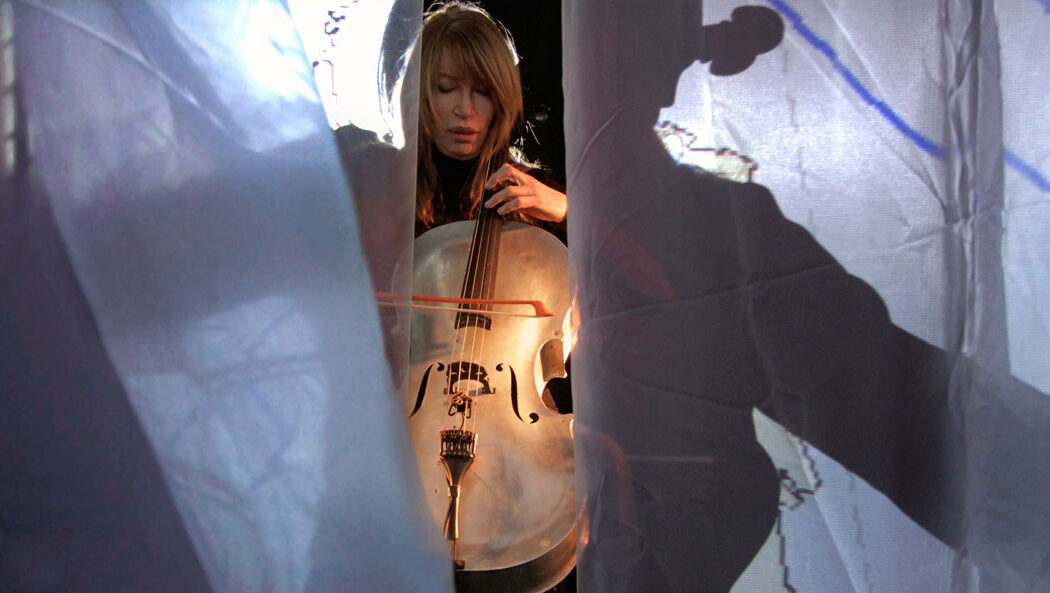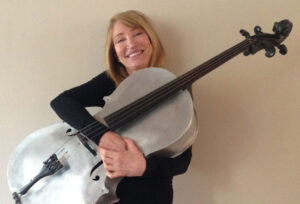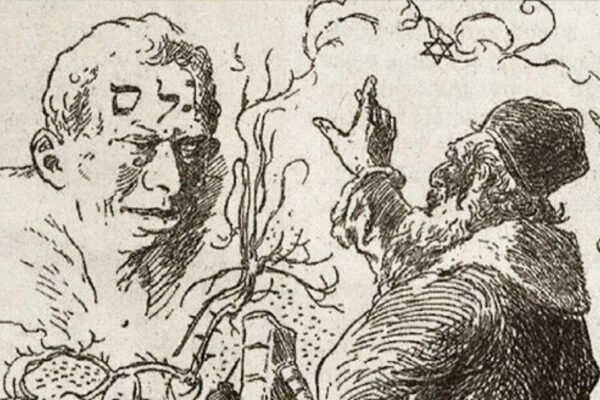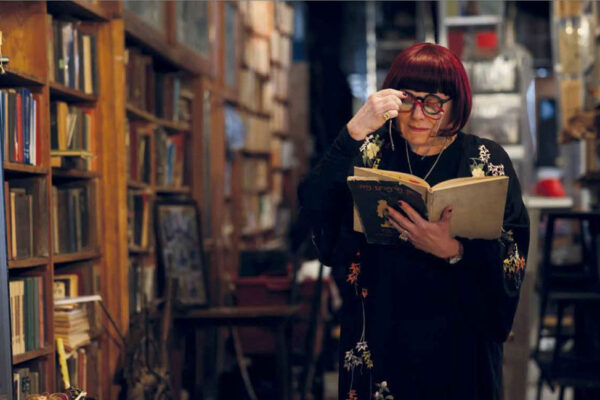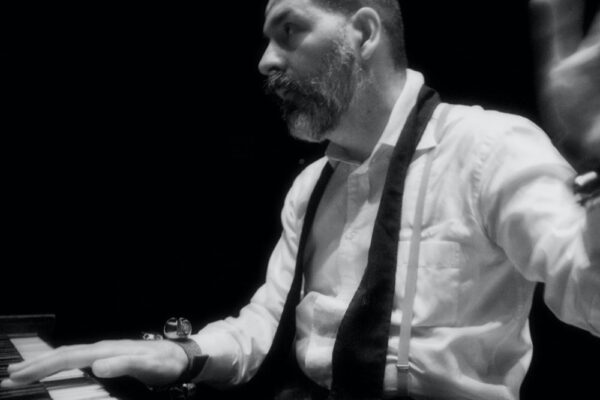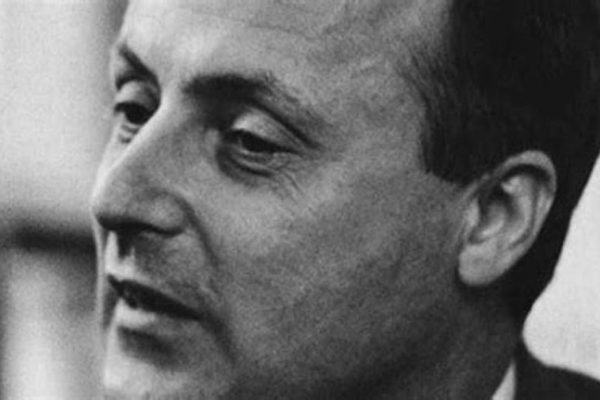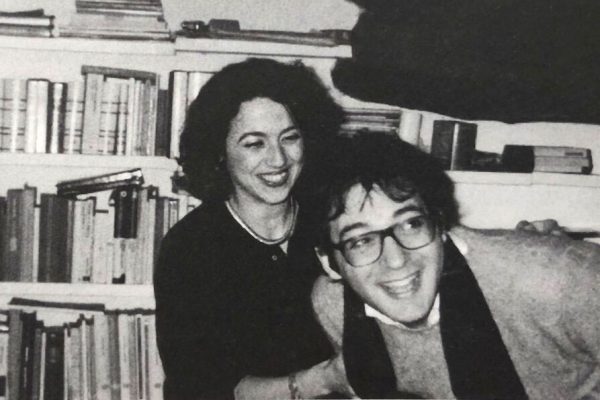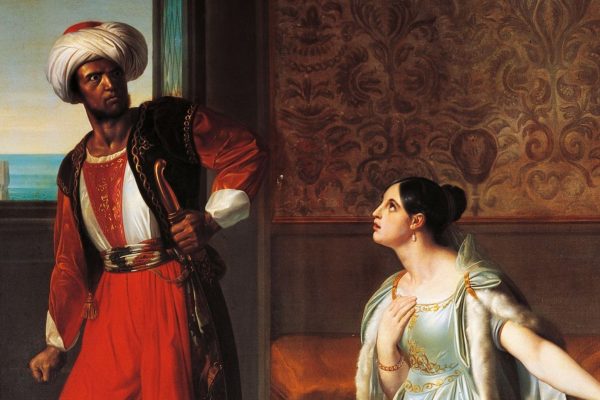The legendary cellist /composer France -Marie Uitti will premiere Luciano Chessa’s Piombo based on a text by Primo Levi at Magazzino Italian Art on January 21. The two-bow technique she has developed over decades allows her to turn the cello into a polyphonic instrument capable of multi-voiced and chordal music. Over the years, many composers have written for her, including György Kurtág, Luigi Nono, Giacinto Scelsi, among others. Presently, she is working on a book about her technique.
Alessandro Cassin: Since you began developing your technique, an impressive number of composers have written music for you to perform with your two-bow technique, I imagine with various degrees of understanding of how it works. Can you describe how Luciano Chessa composed this piece for you?
France-Marie Uitti: Luciano and I have been “threatening” to work together for a really long time. He has heard me and seen me perform many times and I have loved his work for years. I had shown him how the two bows work together, the interactions. I have detailed left hand charts because it’s not obvious what the difference is between this and “normal” chordal playing on the cello. With two bows, one can access non-adjacent strings, you can play all combinations of two, three, and of course, four strings, you can use different voicings and different dynamics between the bows; one bow could be using the wood –col legno– (a beautiful effect some composers use a lot) while using the hair on the other bow, or both bows col legno, both with hair. The possibilities are many and complex.
AC: In effect, the two bows transform the range of the instrument…
FM U: The cello becomes polyphonic. And that was my goal. When I started, I was playing with one bow, and it just couldn’t give me the voicings that I wanted or the richness of the chords. So, if you allow me a short history, I went to a Roman luthier, Giorgio Corsini, and he built me a curved bow that intersected all the strings. But to get the outside strings, one needs to apply more pressure on the middle strings. So with that bow, the voicings were not of my choice, if I wanted to have four strings at once, then the middle strings were always going to be richer, louder, etc. And the cello already is such a rich instrument in the overtones that it was just too much. Once I realized that the curved bow would not work, I came up with the idea of using two bows.
AC: What are some of the inner workings of the technique that you felt a need to share with Luciano?
FM U: It is not immediately clear, but it is challenging to write for the left hand because they are heavy strings you are pressing down, at times fifty kilos under your hand! So I had considerations on things one wants to avoid doing. I wanted him to both write freely and consider some potential technical limitations. Also, changing how a string is tuned opens up chordal possibilities and changes the pitches accessible to the left hand.
AC: While he was writing, you were in residence at Civitella, near Perugia.
FM U: Yes, and after some preliminary talks we had had, it was there that he sent me the beautiful chorale he intended to use at the end of the piece. It was really very difficult to play… So, I scratched my head, thought about it, and came up with a tuning, then ended up discarding it. I knew it would sound gorgeous but simply had not found a way. Upon my return to Amsterdam, where I live, it just clicked: I knew precisely what tuning was needed. for the chorale. It gave the cello a different timbral character, a different spectrum of harmonics, and a different taste in your mouth. Once that was decided, we were able to lock in the harmonic possibilities and proceed. He then sent me other bits, and we would meet on zoom to discuss little adjustments. In other words, the end result is truly tailor-made.
AC: How would you describe the composition?
FM U: I find what he has done incredibly beautiful! Very audacious.
AC: Did You feel Luciano knew beforehand what was possible with the two bows, or did he learn as he went along thanks to your responses and suggestions?
FM U: A little of both. He had a very well-informed idea, and I think that with his wonderful imagination, we took it quite far. Our little sessions on Zoom where really verifications: “If we do this, what does it sound like?” What if we try that instead? Oh, perfect!”
AC: What came after that?
FM U: Once we were done with those “adjustments,” I backed out, ultimately: it is Luciano’s piece, my input was aimed at showing him possibilities. But I did not want to influence his creative input but ultimately perform it as much as possible following his intentions.
AC: Luciano used Primo Levi’s text in a certain way. For you, did reading Piombo helped or inform your understanding of the music?
FM U: Yes, in many ways and on different levels. I read it many years ago, and I read it again last year while I was in Italy. In my eyes, Luciano has redefined Piombo through opposites. The music is very luminous, very fragile; it’s on the edge of audible. It is not this solid lump that we think of the metal, lead. Only the chorale subtly suggests that weight, somberness, and purity. Mostly what you hear in the piece is light, unexpected, and in that way, as a listener, I understand the nature of Piombo better. It’s illumination by reflection, which in a way is its opposite. At least, that is the way I see it.
AC: You are suggesting you feel some kind of contrast?
FM U: Yes. The more I get into the piece, the more I appreciate the subtleness and the colors. Lead is dull, it’s gray, it does not shine, and this piece is the opposite of that. It’s extremely delicate, and very abstract. There are moments of stasis that are completely unexpected and wonderful little surprises here and there. When they appear, you think: “Oh my God, what is this?” And pauses and silences…
AC: Do you think the whole piece is a build-up for the final chorale, planting expectations for a resolution?
FM U: Not exactly, I feel more that all along, you get the flavor, the spices, the taste of it. It’s quite ephemeral. Then… the chorale simply appears. It s so gorgeous that you want more: but it’s already gone.
AC: After talking about collaborating with Luciano, did the actual experience match what you imagined it could be?
FM U: More so! Because Luciano always does things you cannot dream up or expect. Indeed, he absolutely achieves this in this piece. All of his works are very unique; they never sound like a typical instrumental piece, instead he’ll transform that instrument, and it will sound in a way that you could never imagine.
AC: You will perform on an aluminum cello. Can you tell me something about it?
FM U: People may think it’s a gimmick but it is not that at all. We are doing Piombo on an aluminum cello with steel strings. I chose it because of its extreme clarity of sound. The harmonics are extremely rasor thin and penetrating. And I would say it is less “complex” than a wooden cello in the harmonic structure.
AC: Was it custom-made for you?
FM U:, No, it was built in the 1920s. I think even Jascha Heifetz had an aluminum violin, it was in the papers because it was stolen… So there is a tradition of aluminum string instruments. We believe mine was built by the Pfetzschner Studio ( a luthier family famous for their bows) in Germany. I have never seen another aluminum cello.
And I’ve fallen totally in love with it.
In fact, it competes with my old wooden cello from the 1700s, they are very different and both wonderful.


